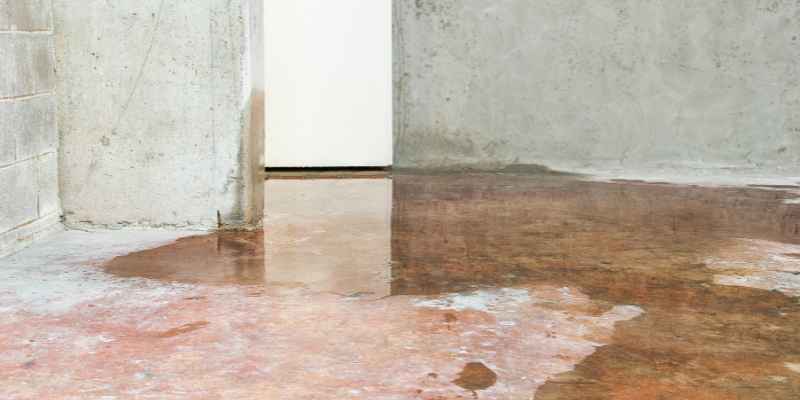Acetone damages wood by stripping finishes, potentially staining and roughening the surface. It is commonly used in woodworking for removing old varnish or paint.
When applied to wood, acetone can change its color and leave stubborn stains, especially on wooden furniture. While wood floor refinishers use acetone to prep surfaces, its contact can damage finished wood immediately by stripping the finish. Therefore, caution is advised when using acetone on wood surfaces to prevent any potential damage or discoloration.
Proper care and maintenance are essential to preserve the beauty and integrity of wooden furniture and surfaces.
Effects Of Acetone On Wood
Immediate Damage On Contact
Acetone damages finished wood surfaces immediately upon contact, primarily affecting the wood’s finish. It is colorless, with a slight odor, highly flammable, and can cause irreversible harm to wood upon exposure.
Discoloration And Staining
When acetone comes into contact with wooden surfaces protected by a thin coating or during major spills, it can be absorbed by the wood. This absorption leads to discoloration, stubborn stains, and roughening of the wood surface, ultimately affecting the overall appearance of the furniture.
Impact On Wood Finish
Wooden furniture can be significantly impacted by acetone, especially if it is coated with varnish or paint. Acetone has the ability to strip away these protective layers, leading to exposure of the raw wood and potentially compromising the integrity of the piece.
Repairing Acetone Damage
If you accidentally spilled acetone on your wood, it can cause damage to the surface and discoloration. However, there are methods available to repair the damage caused by acetone and restore the appearance of the wood.
Refinishing The Wood
If your wood has been damaged by acetone, refinishing it can help restore its original appearance and protect it from further damage. Here are the steps to refinish acetone-damaged wood:
- Start by sanding the affected area to remove any remaining finish and smooth out the surface. Use a fine-grit sandpaper and work in the direction of the wood grain.
- Clean the surface thoroughly to remove any dust or debris left from sanding. You can use a damp cloth or vacuum cleaner to ensure a clean surface.
- Apply a wood stain or sealer to match the color of the surrounding wood. Make sure to choose a product that is compatible with the type of wood you are working with.
- Allow the stain or sealer to dry according to the manufacturer’s instructions. This may take a few hours or overnight.
- Once dry, apply a clear protective finish, such as polyurethane or varnish, to protect the wood and give it a smooth, glossy appearance.
Removing Stains And Discoloration
If the acetone has caused stains or discoloration on the wood, you can try the following methods to remove them:
- Mix equal parts of baking soda and water to create a paste. Apply the paste to the stained area and gently rub it in a circular motion with a soft cloth. Rinse off the paste and dry the wood thoroughly.
- If the stain persists, try using hydrogen peroxide. Apply a small amount to the stained area and let it sit for a few minutes. Then, wipe it off with a clean cloth and rinse the wood.
- If the discoloration is stubborn, you may need to use a wood bleach. Follow the instructions on the product carefully, as different bleach types may require different application methods.
Restoring The Wood’s Finish
Once the acetone damage has been repaired, restoring the wood’s finish is essential to protect it from future damage and maintain its beauty. Here’s how you can restore the finish:
- Start by removing any remaining finish or sealer from the wood using a stripping product. Follow the manufacturer’s instructions and use appropriate safety precautions.
- After stripping, sand the wood lightly to prepare it for the new finish. Use a fine-grit sandpaper and work in the direction of the wood grain.
- Clean the surface thoroughly to remove any dust or debris left from sanding. Ensure the wood is completely dry before proceeding.
- Apply the new finish of your choice, such as varnish or polyurethane. Use a brush, roller, or cloth to apply an even coat, following the manufacturer’s instructions for drying times and additional coats.
- Allow the finish to dry completely before using or placing objects on the wood.
Preventive Measures
Acetone, commonly used for stripping varnish and paint from wood, can damage the wood’s surface by discoloring and roughening it. It’s crucial to take preventive measures to avoid spills and protect wooden furniture from the harmful effects of acetone exposure.
Protective Coatings And Finishes
One effective method to prevent acetone damage to wood is by applying protective coatings and finishes. These coatings create a barrier between the wood and the acetone, preventing direct contact and minimizing the risk of damage. There are various options available, such as:
- Clear polyurethane finish
- Shellac
- Lacquer
- Varnish
Precautions When Using Acetone
When working with acetone, it is important to take proper precautions to minimize the chances of damage to the wood. Follow these guidelines:
- Wear protective gloves to avoid direct contact with the acetone.
- Ensure proper ventilation to reduce the concentration of acetone fumes in the air.
- Avoid excessive acetone usage or scrubbing vigorously on the wood surface.
- Always test a small, inconspicuous area before applying acetone on the entire surface.
- Clean spills immediately with a dry cloth or paper towel to prevent the acetone from penetrating the wood.
- Dispose of acetone-soaked items properly to avoid accidental spills or contamination.
By following these precautions, you can significantly reduce the risk of acetone damage to your wood furniture or flooring.
Expert Insights
Acetone is commonly used for stripping paint or varnish remnants from wood. However, it can cause discoloration and roughen the wood’s grain if absorbed, leading to stubborn stains. Acetone exposure may also damage finished wood surfaces, removing the wood’s finish and potentially bleaching it.
Therefore, it’s essential to handle acetone with care when working with wood.
Woodworking Industry Practices
Acetone is commonly used in the woodworking industry to remove old paint or varnish from wooden furniture, enabling a clean application of a new coat.
Advice From Wood Floor Refinishers
Wood floor refinishers utilize acetone to strip the upper layer of finish from wood before sanding and applying a fresh finish.
Community Experiences
Real-life Acetone Spills On Wood
Acetone spills on wood can cause discoloration and roughening of the surface, leaving stubborn stains behind. The wooden furniture may require specialized care to repair the damage caused by acetone exposure.
Strategies For Dealing With Acetone Damage
- Immediate action: Wipe off excess acetone with a clean cloth to prevent further penetration into the wood.
- Test a small area: Before applying any cleaning solution, test it on a small, inconspicuous area of the wood to ensure it does not cause further damage.
- Use wood cleaner: Apply a mild wood cleaner to the affected area and gently rub in a circular motion to remove stains.
- Sand and refinish: For deeper stains, sanding the wood surface and refinishing it may be necessary to restore its original appearance.
- Consult a professional: If the damage is extensive or if you are unsure about the best course of action, seek advice from a professional woodworker or furniture restorer.

Alternatives To Acetone
When it comes to cleaning and stripping wood, acetone is a commonly used solvent. However, it can be quite harsh and may cause damage to the wood if not used properly. Fortunately, there are several alternatives to acetone that are safer for both you and your wood surfaces.
Safer Cleaning And Stripping Options
If you’re looking for a safer option to clean or strip wood, there are a few alternatives you can consider:
- Vinegar: Vinegar is a natural and gentle cleaning agent that can be used on wood surfaces. Simply mix equal parts vinegar and water, apply it to the wood with a soft cloth, and gently wipe away dirt and grime.
- Mild Soap and Water: For light cleaning, a solution of mild soap and water can be used. Be sure to use a soft cloth or sponge to avoid scratching the wood surface.
- Denatured Alcohol: Denatured alcohol is a solvent that is less harsh than acetone. It can be used to remove paint or varnish from wood surfaces. Apply it with a clean cloth, let it sit for a few minutes, then gently scrape away the paint or varnish with a plastic scraper.
Wood-friendly Solvents And Cleaners
If you’re in need of a stronger solvent or cleaner specifically designed for wood, there are a few options available:
| Product | Description |
|---|---|
| Mineral Spirits | A petroleum-based solvent that can be used to remove paint, varnish, and stains from wood surfaces. It evaporates more slowly than acetone, allowing for better control. |
| Paint Strippers | There are several wood-friendly paint strippers available on the market. Look for ones that are specifically formulated for use on wood and follow the instructions carefully. |
| Citrus-based Cleaners | These cleaners are derived from citrus fruits and are safe to use on wood. They can effectively remove dirt, grease, and grime without causing damage. |
When using any alternative to acetone, it’s important to test it on a small, inconspicuous area of the wood first to ensure it doesn’t cause any damage or discoloration. Always follow the instructions provided by the manufacturer and use the proper safety precautions, such as wearing gloves and working in a well-ventilated area.
Frequently Asked Questions Of Does Acetone Damage Wood
What To Do If Acetone Gets On Wood?
In case acetone gets on wood, immediately wipe it off with a damp cloth. Then, clean the area with a mild soap and water. Finally, sand and refinish the affected area if necessary. If the wood has absorbed the acetone, professional restoration may be needed.
Can I Use Acetone To Clean Wood?
Acetone can be used to clean wood, commonly for stripping paint or varnish before refinishing. It is effective but may damage the wood’s finish or alter its color if absorbed. Special care is needed to prevent staining or roughening of the wood surface.
Does Acetone Change The Color Of Wood?
Yes, acetone can change the color of wood by absorbing into the surface and leaving a stubborn stain. It can also roughen the grain of the wood. It is important to handle wooden furniture with care to avoid damage from acetone spills.
What Does Acetone Ruin?
Acetone can ruin wood by absorbing into the surface, causing discoloration, stains, and roughening the grain. It is damaging to the finish of the wood and may require refinishing to repair.
Conclusion
Using acetone on wood can lead to discoloration and damage to the surface. It is essential to handle acetone carefully and be prepared to refinish the affected area if spills occur. Protecting wooden furniture from acetone exposure is crucial for maintaining its beauty and longevity.


